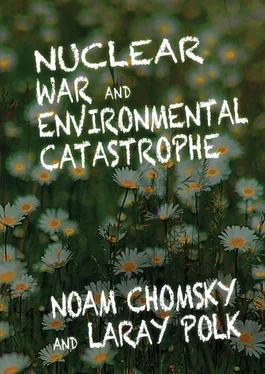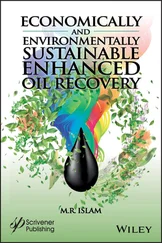The British too. There’s a book by a British diplomatic historian—which will probably barely get reviewed in England—which is about Britain’s support of radical Islam, and it was quite extreme. [21] Mark Curtis, Secret Affairs: Britain’s Collusion with Radical Islam (London: Serpent’s Tail, 2010).
Same reasons, secular nationalism is much more dangerous. Sometimes you catch a tiger by the tail and don’t expect it. This is pretty much the same with Hezbollah. They developed in reaction to the US-backed Israeli invasion and occupation. That’s the way the world works.
Sometimes it’s called blowback. There are some analysts who argue that this is a self-defeating policy. But I’m not so convinced. I mean, the big mistake is supposed to have been installing the shah and overturning the parliamentary system, but it’s hard to see where that was a mistake. For twenty-five years it kept Iran completely under control, kept the US in control over the energy system. Planning doesn’t go much beyond that. If things work for twenty-five years, that’s a success.
The Tehran Research Reactor requires highly enriched uranium fuel to operate; the same is true for MIT’s reactor. The Department of Energy has told MIT it must convert to low-enriched fuel, but the head of engineering at the reactor said they’re most likely not going to meet the deadline. [22] Reactor fuel that is less than 20 percent 235U is classified as LEU or “non-weapon-useable low-enriched uranium.” Fuel that is greater than 20 percent 235U is classified as HEU or high-enriched uranium—“usually weapon-grade uranium (WgU) containing 90 percent or more 235U.” Frank von Hippel, “A Comprehensive Approach to Elimination of Highly-Enriched-Uranium from All Nuclear-Reactor Fuel Cycles,” Science & Global Security 12 (November 2004): 138, doi:10.1080/08929880490518045. Iran’s right to enrich fuel remains central to current tensions: “Iran claims it needs the higher enriched uranium to produce fuel for the Tehran reactor that makes medical radioisotopes needed for cancer patients.” Ali Akbar Dareini, “Iran Claims Two Steps to Nuclear Self-Sufficiency,” Associated Press, February 15, 2012. The US provided Iran with the Tehran Research Reactor in 1967. The reactor, from its inception, is designed to operate on HEU. Sam Roe, “An Atomic Threat Made in America,” Chicago Tribune , January 28, 2007.
I don’t know anything about this.
It’s contentious on two points. One, there’s a reactor in a densely populated urban area. And two—
It’s what they’re using as fuel. So, you can do things with the high-energy fuel that you can’t do with less enriched fuel?
According to a Boston Globe story from 2009, the “MIT reactor could be converted quickly if it were willing to give up some performance.” The same report states the reactor “brings in about $1.5 million a year from commercial work, which covers about 60 percent of the annual operating costs.” [23] Bryan Bender, “Potent Fuel at MIT Reactor Makes for Uneasy Politics,” Boston Globe , December 29, 2009.
Where do they get that from?
I’m unsure of the specific entities, but mainly from producing radiotherapies. [24] Ibid. In addition to training nuclear engineers, the MIT Reactor “is also a money-making enterprise, by radiating seeds used in prostate cancer treatments and by turning silicon into high-performance semiconductors for the hybrid car market.”
There hasn’t been an inquiry at MIT into research, as far as I’m aware, since 1969. At that time, under the pressure of the student movement, there was a faculty/student inquiry. Actually I was on the committee, the Pounds Commission, which looked into MIT’s finances and also into war-related activities on campus. It was pretty interesting. It turned out that nobody, even the administration, knew the financial details. It turned out that roughly half of the institute budget was running two classified military laboratories: Lincoln, and what’s now the Draper Lab. The other half of the budget, I think, was approximately 90 percent funded by the Pentagon in those days.
The Pentagon, contrary to what people believe, is the greatest funder there is. They don’t pay all that much attention to what you’re doing; they just know that they’re the way to funnel taxpayer money into the next stage of the economy. We did look into military work. It turns out there was no classified work on campus and no direct military-related work, but anything that’s done is likely to have some military application. The only department that had any war-related work was the Political Science Department and it was being done under the rubric of a Peace Research Institute—straight out of Orwell—which had villas in Saigon where they were sending students for PhDs on counterinsurgency. And they were also running secret seminars in the Political Science Department on Vietnam strategy and so on. I found out when I was invited to take part in one.
Outside the Political Science Department, it was pretty clean. Now, if you take a look over the years, Pentagon funding has declined and funding from the NIH has increased. And I suspect almost everybody understands it. The reason is because the cutting edge of the economy is shifting to biology, away from an electronics-based economy, so you have to rip off the taxpayer in some different fashion. We don’t have a free-market economy. Federal spending, government procurement, and other devices are huge components. Funding is also getting more corporatized. I suspect what is going on here is more corporate funding, and the corporate funding has a general cheapening effect.
Federal funding is long term, it’s nonintrusive, and they just want things to be done. But if big corporations fund something, they’re not interested in the future health of the economy. They want something for themselves. So it means that research becomes more short term, it becomes much more secret. Federal funding is completely open, but a corporation can impose secrecy; they can indicate you’re not going to get refunded unless you keep it quiet. So it does impose secrecy. There are some famous cases that have come out; one big scandal even made the Wall Street Journal .
As long as it stays secret, they can do as they like.
Robert Barsky wrote that during the protests on the MIT campus in the 1960s, you held an extreme position even among the liberal faculty. Basically, you didn’t believe shutting down the labs involved in military research was the solution, but rather, “universities with departments that work on bacterial warfare should do so openly.” [25] Robert F. Barsky, Noam Chomsky: A Life of Dissent (Toronto: ECW Press, 1997), 140.
What is to be gained by that approach?
These matters came to a head at the Pounds Commission. Its primary concern was the relation of MIT’s academic/research program to the two military laboratories it administered, Lincoln and the Instrumentation Lab (now the Draper Lab). The commission split three ways. One group (call them “conservatives”) favored keeping the labs on campus. A second (“liberals”) favored separating the labs from MIT. A third (“radicals,” I think consisting just of me and the one student representative) agreed with the conservatives, though for different reasons. If the labs were formally separated, nothing much would change in substance: joint seminars and other interactions would continue pretty much as before, but now with formally separate entities. What the labs are doing would disappear as a campus issue. But what they are doing is vastly more important than the appearance of a “clean campus,” and their presence would be a regular focus for education and activism. The liberal view prevailed, and the outcome was much as anticipated—a step backward, I think, for the reasons mentioned.
Читать дальше












